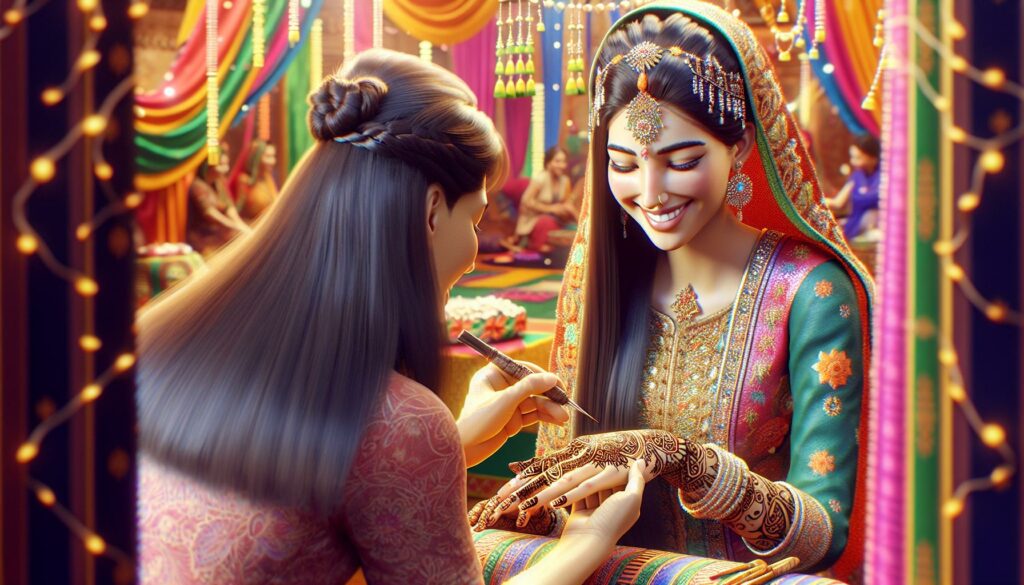When it comes to celebrating culture and tradition, few things capture the essence quite like mehndi. This beautiful art form, often seen adorning hands and feet during special occasions, has deep roots in Arabic culture. I’ve always been fascinated by the intricate designs and the stories they tell.
Key Takeaways
- Cultural Significance: Arabic mehndi, or henna, is deeply rooted in cultural traditions, symbolizing joy, love, and protection during celebrations like weddings and festivals.
- Intricate Designs: Common motifs include paisleys, floral patterns, and Arabic calligraphy, each carrying specific meanings and narratives related to beauty, grace, and personal stories.
- Application Techniques: Various methods such as cone application, brush application, and stenciling enhance design precision, while the use of high-quality henna and essential oils improves stain longevity.
- Historical Roots: The practice of mehndi has evolved over centuries, reflecting regional variations and community bonds, often serving as a rite of passage for brides.
- Contemporary Trends: Modern influences in mehndi designs showcase abstract patterns and minimalistic styles, appealing to younger audiences while preserving cultural essence in festive settings.
Arabic:halhzhy_rjw= Mehndi
Arabic:halhzhy_rjw= Mehndi, or henna, serves as a cultural symbol, often seen during joyous occasions like weddings and festivals. This art form incorporates unique patterns, emphasizing fluid lines and floral motifs. The use of mehndi transcends mere decoration; it conveys deep meanings, representing love, happiness, and protection.
The application of mehndi often involves meticulous preparation. I mix natural henna powder with ingredients like lemon juice, sugar, and essential oils to achieve a rich color. This blend enhances the henna’s staining properties, ensuring vibrant designs that last for several weeks.
During special events, skilled mehndi artists create intricate designs directly on the skin. Common elements include paisleys, geometrical shapes, and Arabic calligraphy. Specific designs symbolize different themes; for instance, peacock motifs represent beauty and grace.
The timeframe for mehndi application varies. Artists can spend anywhere from a few minutes to several hours on detailed patterns, depending on the design’s complexity. Typically, the color deepens over 24 to 48 hours, showcasing rich, warm tones.
Caring for the mehndi post-application is crucial. I recommend avoiding water and excessive moisture for at least 12 hours after application. This practice maximizes the stain intensity, allowing the designs to stand out beautifully.
In Arabic culture, mehndi is more than a decorative art; it embodies customs, traditions, and personal stories. The practice continues to evolve, blending modern elements with traditional motifs, ensuring its relevance in contemporary society.
Historical Significance of Mehndi
Arabic:halhzhy_rjw= Mehndi carries deep historical significance, intricately linked to cultural traditions and various regional practices. This art form has evolved over centuries, becoming a vital aspect of celebrations across different communities.
Cultural Traditions
Cultural traditions surrounding mehndi date back to ancient civilizations. In Arabic culture, mehndi symbolizes joy and festivity, commonly used during weddings and religious celebrations. I observe how families gather for mehndi application, sharing stories and laughter, reinforcing communal bonds. The act of applying mehndi often serves as a rite of passage, especially for brides. Commonly, intricate henna designs reflect personal and familial heritage, representing devotion and happiness. I notice that these traditions often include specific motifs, such as the paisley, which signifies fertility and abundance.
Regional Variations
Regional variations in mehndi designs highlight the diverse expressions of this art form. In North Africa, for instance, one finds bold geometric patterns, reflecting the region’s historical influences and aesthetic preferences. In contrast, intricate floral designs dominate South Asian styles, showcasing the cultural blend. I discover that Middle Eastern mehndi often incorporates motifs celebrating local flora and fauna, such as the cypress tree, symbolizing strength and resilience. Each regional style not only represents local customs but also serves as a narrative of the region’s history and cultural evolution.
Techniques of Arabic Mehndi
Arabic:halhzhy_rjw= Mehndi techniques encompass various methods and tools that enhance the art of henna application. I focus on the following essential techniques.
Application Methods
I use different application methods to achieve unique designs. Common techniques include:
- Cone Application: I prefer using a well-fitted cone for precise lines and intricate patterns. This method allows me to control the flow of henna, resulting in detailed designs.
- Brush Application: I opt for a brush when creating broader patterns or filling in larger areas. This technique helps cover more space quickly and neatly.
- Stenciling: I sometimes use stencils for consistent, repetitive designs. Placing a stencil on the skin and applying henna ensures uniformity in patterns, especially for beginners.
- Finger Application: For a more spontaneous and organic look, I utilize my fingers to apply henna directly. This method creates a free-flowing design that often feels more personal and unique.
- Henna Powder: I choose high-quality henna powder, primarily sourced from the Lawsonia inermis plant, known for its rich color and fine consistency.
- Essential Oils: I mix henna with essential oils, such as eucalyptus or lavender, enhancing the saturation and longevity of the color.
- Mehndi Cone: I fill a cone made from plastic or paper with henna paste. The cone allows for precise line work and intricate details.
- Cotton Balls: I keep cotton balls on hand for cleaning edges and correcting mistakes. They help maintain clean designs throughout the application.
- Plastic Wrap: I use plastic wrap or a bandage to cover the henna once applied. This helps preserve moisture and intensify the stain while it dries.
Popular Designs and Patterns
Arabic mehndi showcases a variety of stunning designs, notably geometric shapes and floral motifs, each serving as a testament to cultural significance and artistic expression.
Geometric Shapes
Geometric shapes in mehndi feature clean lines, symmetrical patterns, and bold designs. These shapes often symbolize balance and harmony within life. Artists skillfully incorporate triangles, squares, and intricate mandalas that can encompass entire hands or feet, providing a modern twist to traditional artistry. Popular examples include chevrons and interlocking diamonds, which create striking visual contrasts and enhance the wearer’s elegance during celebratory events, such as weddings.
Floral Motifs
Floral motifs rank among the most popular designs in Arabic mehndi, celebrating nature’s beauty and representing prosperity and growth. Artists create elaborate patterns with lotus flowers, roses, and leaves, each conveying different meanings. For instance, the lotus symbolizes purity and enlightenment, while roses represent love and beauty. Floral designs vary in complexity from simple outlines to lavish, detailed arrangements that cover large areas. These motifs not only adorn the skin but also narrate personal stories and cultural heritage, exemplifying the blend of artistry and tradition inherent in mehndi.
Contemporary Trends in Mehndi
Contemporary mehndi reflects a dynamic blend of tradition and modernity, showcasing diverse influences and applications. Current trends respond to evolving tastes while preserving cultural significance.
Influences from Modern Art
Modern art significantly shapes contemporary mehndi designs. Artists incorporate abstract patterns, minimalistic styles, and bold color contrasts. This fusion leads to innovative compositions that marry classical motifs with contemporary aesthetics. Artists experiment with geometric designs, echoing popular art movements, and often draw inspiration from fashion trends, creating visually striking mehndi that resonates with younger audiences.
Mehndi in Events and Celebrations
Arabic:halhzhy_rjw= Mehndi plays a central role in various events beyond traditional celebrations. At festivals, it serves as a creative outlet, allowing individuals to showcase personal style through unique designs. In bridal showers and family gatherings, mehndi application transforms into a group activity, fostering community spirit and creating memorable experiences. Seasonal events like Eid and Diwali see increased demand for mehndi, with artists adapting their styles to reflect festive themes.
Expression of Culture and Heritage
Mehndi is more than just body art; it’s a vibrant expression of culture and heritage. Through its intricate designs and deep-rooted traditions, it tells stories that resonate with joy and celebration. I find it fascinating how this art form continues to evolve while maintaining its significance in modern society.
As I explore the various techniques and styles, I appreciate the skill and creativity that artists bring to each design. Whether it’s a wedding or a festival, mehndi remains a cherished tradition that unites communities and celebrates life’s special moments. The blend of traditional and contemporary elements ensures that mehndi will continue to thrive for generations to come.

